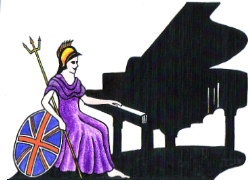Teachers, Accompanists and Piano Entertainers in the UK

UK Piano Page

30 Portland Street
Handforth, Greater Manchester M1 4GS
England
Feilden St
Blackburn, Lancashire BB2 1LN
England
Reidys home of Music was established in 1922 and
156 Hatfield Road
St Albans, Hertfordshire AL1 4TU
England
Selection of new and restored pianos always in
122A Horsham La
Upchurch
Gillingham, Kent ME87XB
England
Main agents for Steinmayer, Weber and Gors &
Bedford House Bedford Street
Belfast, County Antrim BT1 6GE
Northern Ireland
Exclusive Yamaha and Roland dealer for Belfast. We
Music Festival for performers and guests Our 10th
18-06-2022 01:30PM
The Morecambe Bay Piano Group was set up to extend
11-12-2021 02:00PM
The Morecambe Bay Piano Group was set up to extend
08-01-2022 02:00PM
The Morecambe Bay Piano Group was set up to extend
12-02-2022 02:00PM